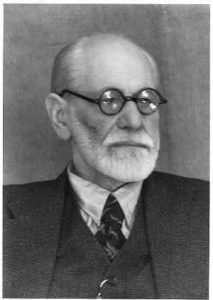16 Recap of Technology Adoption in Society and Higher Education
Narasi Ramachandran

The experience of engaging with new technology has always been a mixed bag of emotions. While some people may be ecstatic and over the moon, some would shy away from it, and some people may experience a vast outburst of emotions to exhibit their disapproval and fears. Sigmund Freud, the father of psychoanalysis, had an immense fear of flying since he attempted it for the first time in 1930, that even with the fear of Hitler taking control of Germany in 1933, Freud did not want to board a plane to get out of Austria (Scherr, 2001). If one were to consider the digitization of modern society and the role of technology, mass adoption and interdisciplinary application on computing were made possible by focusing on the mundane aspects of computing rather than glorifying the advancements of engineering and scientific processes in computation. Ensmenger (2012) notes that focus on software made computational devices flexible and drove adoption across multiple disciplines and professions. Software development for computers paved the way for applications of computational powers across society.
Developments in computing at higher educational institutions—the first operational computers, MARK1 in 1941 and ENIAC in 1944—were primarily targeted to help replace the slide rule and deal with real-world problems of scope and size, mainly in mathematics, science, and engineering (Molnar, 1997). The launch of PLATO at the University of Illinois in 1953 for use among undergraduate students, community colleges, and several elementary schools can be credited with the ubiquitous use of computers in education. Similarly, the development of computer programming language packages in 1963, such as FORTRAN and BASIC, paved the way for computer-aided instructions across multiple disciplines in education. Coding or programming is one of the barriers one should plan to overcome to facilitate interdisciplinary engagement.By 1975, personal computers gained huge popularity due to their affordability and facilitated greater adoption among universities and students (Molnar, 1997). These changes to access and integration to various disciplines of education led to the explosion of scientific information, changed to the global economy, and transformed education to promote higher-order thinking to test and solve real-world problems.
Miniaturization of technologies gave consumers high-power computers on hand that could be used on-demand. Using supercomputers, advancements in graphics and computing powers allowed researchers to study large-scale real-world problems via simulations. Artificial Intelligence (AI) brings about a similar transformation in education and adoption. However, recognizing past adoption gaps and providing equitable access to engage, educate, and experience to the larger audience requires removing some barriers to adoption. Coding or programming is one of the barriers one should plan to overcome to facilitate interdisciplinary engagement.

Feedback/Errata